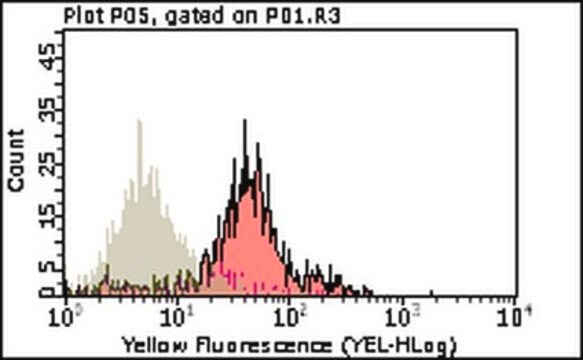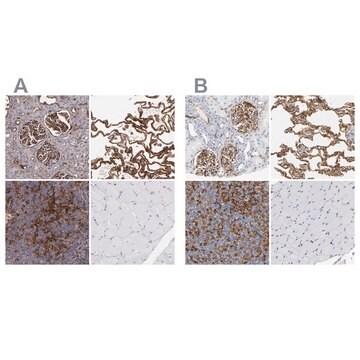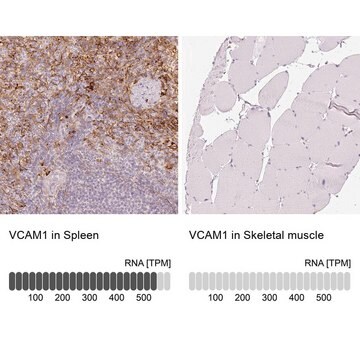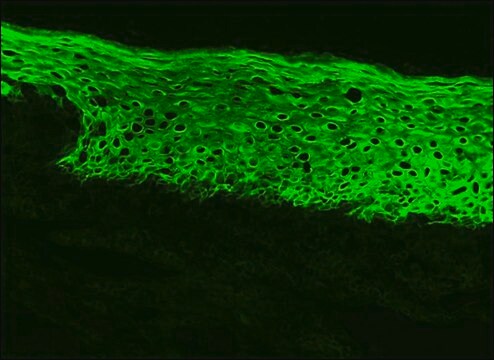CBL1300
Anti-VCAM-1 Antibody, clone M/K
clone M/K - 2, Chemicon®, from rat
Sinónimos:
CD106
About This Item
Productos recomendados
origen biológico
rat
Nivel de calidad
forma del anticuerpo
purified antibody
tipo de anticuerpo
primary antibodies
clon
M/K - 2, monoclonal
reactividad de especies
mouse
fabricante / nombre comercial
Chemicon®
técnicas
flow cytometry: suitable
immunohistochemistry: suitable
immunoprecipitation (IP): suitable
isotipo
IgG1κ
Nº de acceso NCBI
Nº de acceso UniProt
Condiciones de envío
wet ice
modificación del objetivo postraduccional
unmodified
Información sobre el gen
human ... L1CAM(3897) , VCAM1(7412)
Categorías relacionadas
Especificidad
Aplicación
Cell adhesion assays
Inhibition of lymphopoieisis in Whitlock-Witte long-term marrow cultures
Immunoprecipitation of the VCAM-1 integrin complex
Detection of VCAM-1 cells by immunofluorescence and immunohistochemical staining: acetone or fresh frozen sections work best; although zinc formalin or PLP fixations are reported to work but they have not be verified by Chemicon.
Optimal working dilutions must be determined by the end user.
Ligadura / enlace
Forma física
Nota de análisis
EOMA and BMS2 endothelial cell lysates
Otras notas
Información legal
¿No encuentra el producto adecuado?
Pruebe nuestro Herramienta de selección de productos.
Código de clase de almacenamiento
10 - Combustible liquids
Clase de riesgo para el agua (WGK)
WGK 2
Punto de inflamabilidad (°F)
Not applicable
Punto de inflamabilidad (°C)
Not applicable
Certificados de análisis (COA)
Busque Certificados de análisis (COA) introduciendo el número de lote del producto. Los números de lote se encuentran en la etiqueta del producto después de las palabras «Lot» o «Batch»
¿Ya tiene este producto?
Encuentre la documentación para los productos que ha comprado recientemente en la Biblioteca de documentos.
Nuestro equipo de científicos tiene experiencia en todas las áreas de investigación: Ciencias de la vida, Ciencia de los materiales, Síntesis química, Cromatografía, Analítica y muchas otras.
Póngase en contacto con el Servicio técnico







